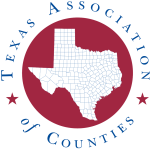Programs
Preparing for your Website Migration: Consolidating Web Content

As part of the upcoming website migrations, counties will incur a migration fee based on the number of webpages they maintain.
The page count brackets are:
- Tier 1: Fewer than 50 pages
- Tier 2: 50–100 pages
- Tier 3: More than 100 pages
Some counties may be able to reduce their page count before migration, lowering their cost. This guide outlines strategies and considerations to help you decide whether consolidation makes sense for your county.
Before making changes, take time to evaluate whether reducing your page count is realistic and whether the effort is worth the cost savings.
Review your website and determine:
- Your current page count
- Which bracket you fall into today
- How many pages you would need to consolidate to move into a lower bracket
- Whether the time and effort required is practical given the potential savings
If you have 103 pages, a small amount of consolidation could move you into the 50–100 bracket. If you have 180 pages, the amount of consolidation required may not be worth the savings.
Not all pages need their own standalone space. Look for ways to combine similar information to fewer pages.
Maximize your public notices calendar
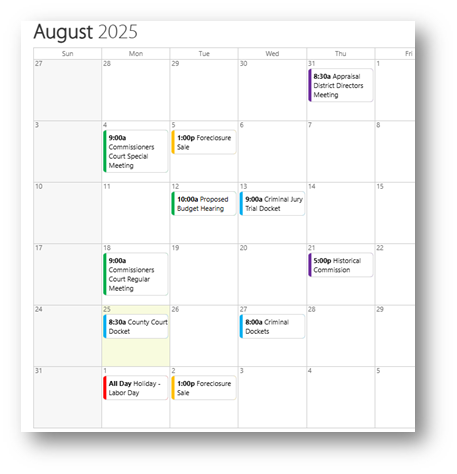
Instead of posting recurring events on separate pages, add them directly to your public notices calendar.
- • Meeting notices, agendas and minutes
- • Foreclosure notices
- • Court dockets
- • Holiday and closure notices
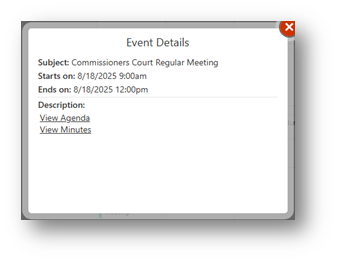
Centralize your financial sustainability documents
Bring related reports together on a single page for easier navigation.
- Budgets
- Tax rate
- Utility reports
- Treasurer’s reports
- Check registers
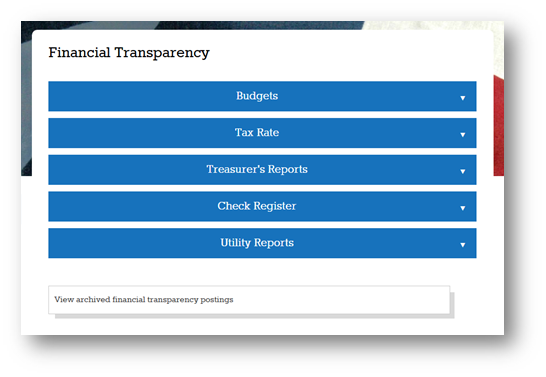
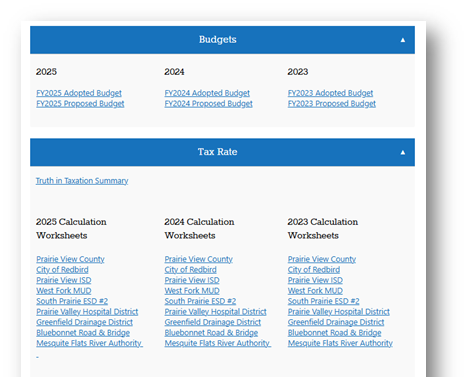
Evaluate sparse pages
Pages with only a small amount of information can frustrate visitors and make your site harder to navigate. Instead of scattering minimal content across multiple pages, consider where else the content is relevant and move it there.
- Commissioners Court and Justices of the Peace precincts: Provide all precinct details on a single page instead of maintaining separate pages for each.
- District Courts: If each court page has minimal information, combine them into one comprehensive page.
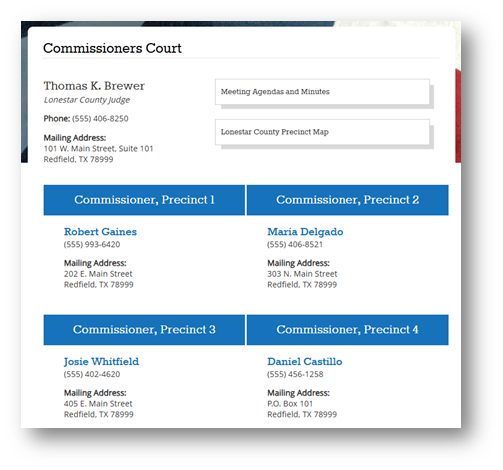
Avoid over-consolidation
Consolidation is valuable, but it has limits.
- Don’t overload a single page with too much information — it can overwhelm visitors and hurt usability.
- Consolidate only when it makes the content clearer and easier to navigate.
When we talk about “page count,” we mean every page listed in your county’s project — not just the ones linked in your site’s navigation. This includes hidden or disconnected pages, which often make for some of the easiest wins when reducing your total page count.
That said, caution should always be used when deleting pages. Once a page is deleted, its content cannot be restored. For this reason, most members do not have access to delete pages by default. If you identify pages that should be removed, you can request deletion access by contacting CIRA — or, more simply, email CIRA Support and a CIRA representative will take care of the removal for you.
Ensure removal after consolidation
Once content has been moved to a new page, make sure the old page is fully deleted so it no longer counts toward your total page count. If you don’t have access to delete pages, you can request access through CIRA — or simply email CIRA Support and a CIRA representative will handle the removal for you.
Identify hidden or disconnected pages
- Review each URL in your CIRA-provided webpage list.
- If the content is outdated, mark it for updates or removal.
- If you’re unable to access a webpage, confirm why with your county’s website editors or TAC CIRA.
- Use the Project Manager features available to your county’s designated website editors. Contact TAC CIRA if you aren’t aware of who these individuals are or would like to request access.
- Sort by “Modified”: Ask yourself if it makes sense that a page hasn’t been updated since its listed date. If not, review it — it may be an old page ready to delete.
- Search page titles: Look for page names containing “old,” “new,” or “archive.” Confirm the necessary content is available on your live site, then remove the outdated version.
Remember retention schedules and archiving
Before removing or consolidating content, remember that not everything can simply be deleted.
- Website posting requirements: Certain notices, agendas and public records must be posted online to meet legal and transparency obligations. Verify the specific requirements that apply to your county.
- Retention rules: Some items are legally required to stay posted for specific periods. Make sure you understand the retention schedules before removing content.
- Archiving: When older information must remain available, consider creating dedicated archive pages. This preserves access while keeping your current content streamlined, though it may increase overall page count. Factor this into your planning.
Smart consolidation can save costs and improve usability — when approached thoughtfully.
- Review each section of your website before making changes.
- Confirm your plan internally before deleting or merging webpages.
- Track your progress against your target page-count range.
If you have questions or need assistance, email CIRA Support.
